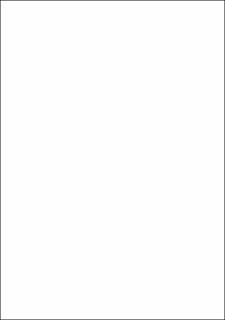| dc.contributor.advisor | Stensrud, Nils Henrik | |
| dc.contributor.advisor | Aalto, Pasi | |
| dc.contributor.author | Kolås, Anneli | |
| dc.date.accessioned | 2023-11-07T18:19:58Z | |
| dc.date.available | 2023-11-07T18:19:58Z | |
| dc.date.issued | 2022 | |
| dc.identifier | no.ntnu:inspera:113038047:57437171 | |
| dc.identifier.uri | https://hdl.handle.net/11250/3101226 | |
| dc.description.abstract | Denne masteroppgaven beskriver min del av et tverrfaglig team, for å designe en delingshytte for Salten Friluftsråd. Målet med arbeidet var å fordype seg i sirkulær økonomi og ta det inn i prosjektet, og diskutere mulighetene og utfordringer knyttet til det. DNT har sirkulær økonomi som en av sine bærekraftsmål, og det har vært fokus på å redusere materialbruk og ha gjenbrukte materialer i prosjektet.
Design av hytten foregikk som et samarbeid mellom tre studenter fra 2-årig masterstudiet Sustainable Architecture. Konseptet for Nordlandsbua ble en liten nødbu med et sommerskall som kan benyttes som ekstra overnattingsplass på sommertid, da flere går i fjellet. Nødbua ble bygget i løpet av to uker i mai, og presentert på Friluftsliv Landskonferanse i slutten av mai. Det ble det gjort intervjuer med friluftsinteresserte som ga tilbakemeldinger om Nordlandsbua og tanker om sirkulær økonomi.
Det er fokusert på å redusere materialbruk i forhold til å bygge en liten og kompakt nødbu med et sommerskall. Fokus på å redusere avfall under bygging er også blitt gjort. FutureBuilt sine kriteria er brukt for å anslå sirkulariteten av Nordlandsbua.Den bygde delen består nå av 12% gjenbrukte materialer. Hvis sommerskallet bygges med gjenbruksmateriale, vil dette økes. Ombrukbarheten består av mellom 10%-90%, avhengig av tilstanden på materialene når det gjenbrukes.
Gjenbrukte materialer krever planlegging og mulighet for oppbevaring. Dette gjør det tidkrevende og lite lønnsomt. Mye skulle planlegges på kort tid. Til tross for at delingshytten skulle være liten. Ekstra stort ansvar var det også med tanke på at hytten skulle bygges i Bodø, der vi var prosjektledere for første gang. Stort tidspress førte til at det som hastet mest var det som ble prioritert. | |
| dc.description.abstract | This master thesis describes is a mix of individual and communal work, to design a shared cabin in Nordlandsruta. The goal of the individual work was to look at circular economy and how that can be influenced into the project, and the opportunities and challenges related to it. DNT has circular economy as one of their sustainable goals and there has been focus in how to reduce material use and the use of reused materials to the project.
The concept of Nordlandsbua is to provide a space for hikers to get rest and dry their clothes, get a good night sleep and a place to cook their dinner. We designed a winter core with the possibility of an outer shell. The core is insulated and has a small stove as heating in the winter months. The oater shell provides the possibility to have more visitors during the summer. DNT’s trails are more used in the summer months. Instead of making a big cabin that would require more energy to get warm, this makes it more flexible and will decrease the demand for wood - with the correct use. The outer shell is not insulated and will be encourage to be built with reused materials, to reduce the need of new materials.
There is space for four people to sleep comfortable, and the lower beds can be used as seating. The construction is built built by studwork with crossbracing. Wood fiber insulation was chosen as insulation because it is a natural product and the client had experienced moisture demage and problems with mouses when using glass wool insulation. Vapor break was chosen since the building is not fully occupied, in order to make the construction to breath out. The drying room is designed so the users can get their clothes and gears dry without fully occupying the space around the stove and kitchen area.
A key goal of the project was to present the prototype and get feedback at Landskonferanse Friluftsliv 2022 in Bodø.
FutureBuilt’s methods and criteria for circular buildings were used to evaluate the circularity of the project. The built core is consisting of 12% of reused materials and the reusable materials is between 10%-90%, depending of the condition when reusing. If the outer shell is made from reused materials the share of circularity will increase.
Reused materials requires time and coordinating. The project period needs to be longer and it needs to be planned early in the project. There needs to be room to change the design in order to see what materials you get. | |
| dc.language | eng | |
| dc.publisher | NTNU | |
| dc.title | Shared Cabin in Nordlandsruta - from a Circular Economy Perspective | |
| dc.type | Master thesis | |
